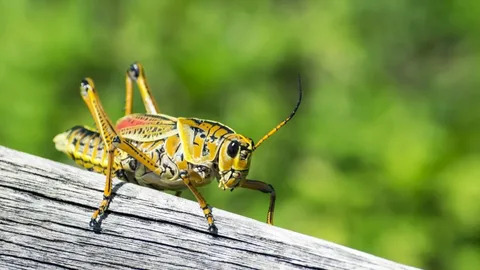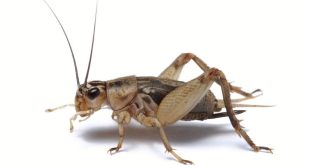Cricket and carpet beetle are two common names for household pests. While they are vastly different in appearance, diet, and behavior, both can become nuisances under certain circumstances. This blog post explores the characteristics of cricket and carpet beetle, their habits, and how to manage them effectively.

Crickets Demystified: Understanding These Noisy Insects
Crickets are small, jumping insects known for their distinctive chirping sounds. They belong to the Gryllidae family and are typically live in warm and damp environments. There are various species of crickets, including house crickets, field crickets, and camel crickets.
Key Characteristics of Crickets:
- Appearance: Crickets are usually brown or black, with long antennae and powerful hind legs designed for jumping.
- Diet: Crickets are omnivorous and feed on a variety of organic materials, including plant matter, fungi, and smaller insects.
- Habitat: They prefer warm, dark, and moist places such as basements, under rocks, and in garden beds.
- Behavior: Crickets are nocturnal and are famous for their chirping, which is produced by rubbing their wings together to attract mates.
Uncovering Carpet Beetles
Carpet beetles are small insects that belong to the Dermestidae family. While the adult beetles primarily feed on pollen and nectar, their larvae are known for causing damage to household items.
Key Characteristics of Carpet Beetles:
- Appearance: Adult carpet beetles are oval-shaped, with a hard shell that is often patterned with black, white, and yellow. Larvae are small, hairy, and worm-like.
- Diet: Carpet beetle larvae feed on natural fibers such as wool, silk, fur, feathers, and even stored food products. They are notorious for damaging carpets, clothing, and upholstered furniture.
- Habitat: Adults are often found near windows and flowers, while larvae hide in dark, undisturbed areas of the home like closets, attics, and under furniture.
- Behavior: Carpet beetles are silent and can go unnoticed until significant damage is done.
Differences Between Crickets and Carpet Beetles
While both crickets and carpet beetles can be found in homes, they differ significantly:
| Feature | Crickets | Carpet Beetles |
|---|---|---|
| Diet | Organic material, fungi, insects | Natural fibers, stored food |
| Damage | Minimal (occasional chewing) | Significant (damages fabrics) |
| Activity | Nocturnal and noisy | Silent and often unnoticed |
| Habitat | Warm, moist areas | Dark, undisturbed areas |
| Appearance | Brown or black, long legs | Patterned shell, hairy larvae |
How to Manage Crickets and Carpet Beetles
Tips for Controlling Crickets:
- Seal Entry Points: Block gaps in doors, windows, and walls to prevent crickets from entering your home.
- Reduce Moisture: Fix leaks and use dehumidifiers to make your home less attractive to crickets.
- Eliminate Food Sources: Keep your home clean and store food in sealed containers.
- Use Traps or Baits: Sticky traps and cricket baits can help reduce their population indoors.
Tips for Controlling Carpet Beetles:
- Regular Cleaning: Vacuum carpets, rugs, and furniture frequently to remove larvae and eggs.
- Store Items Properly: Keep wool, silk, and other natural fibers in sealed containers or bags.
- Inspect Secondhand Items: Check used furniture or clothing for signs of infestation before bringing them indoors.
- Use Insecticides: Apply insecticides to affected areas, focusing on cracks, crevices, and storage spaces.
The Ecological Role of Crickets and Carpet Beetles
While they can be pests, crickets and carpet beetles play important roles in nature:
- Crickets: They are a food source for many predators and help in the decomposition of organic matter.
- Carpet Beetles: Their larvae contribute to breaking down animal materials in the environment, aiding nutrient recycling.
Conclusion
Crickets and carpet beetles are vastly different in their habits, diets, and impacts on your home. While crickets are mostly a nuisance due to their chirping, carpet beetles can cause significant damage to household items. By understanding their behavior and taking preventive measures, you can effectively manage and coexist with these insects when necessary.
 Digital Business Trends Powering Growth With Digital Strategies.
Digital Business Trends Powering Growth With Digital Strategies. 

